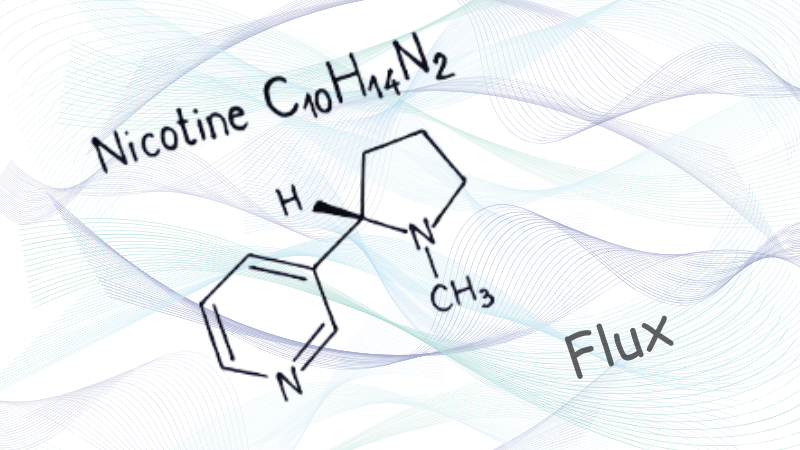Nicotine Flux: Difference between revisions
Jump to navigation
Jump to search
(created page) |
No edit summary |
||
| Line 1: | Line 1: | ||
[[File:Nicotine Flux.png|center]] | [[File:Nicotine Flux.png|center]] | ||
<br | <br> | ||
===2015: [https://www.ncbi.nlm.nih.gov/pmc/articles/PMC4837999/ Electronic Cigarette Effectiveness and Abuse Liability: Predicting and Regulating Nicotine Flux]=== | ===2015: [https://www.ncbi.nlm.nih.gov/pmc/articles/PMC4837999/ Electronic Cigarette Effectiveness and Abuse Liability: Predicting and Regulating Nicotine Flux]=== | ||
*"In this commentary, we propose a conceptual framework intended to provide a convenient approach for evaluating and regulating the nicotine emitted from ECIGs. This framework employs nicotine flux to account for the total dose and rate at which nicotine reaches the user, 2 key factors in drug abuse liability. The nicotine flux is the nicotine emitted per puff second (e.g., mg/s) by a given ECIG design under given use conditions, and it can be predicted accurately using physical principles. We speculate that if the flux is too low, users likely will abandon the device and maintain conventional tobacco product use. Also, we speculate that if the flux is too high, individuals may suffer toxic side effects and/or the device may have higher-than-necessary abuse liability. By considering ECIG design, operation conditions, liquid composition, and puff behavior variables in combination, we illustrate how ECIG specifications can be realistically mandated to result in a target flux range." | *"In this commentary, we propose a conceptual framework intended to provide a convenient approach for evaluating and regulating the nicotine emitted from ECIGs. This framework employs nicotine flux to account for the total dose and rate at which nicotine reaches the user, 2 key factors in drug abuse liability. The nicotine flux is the nicotine emitted per puff second (e.g., mg/s) by a given ECIG design under given use conditions, and it can be predicted accurately using physical principles. We speculate that if the flux is too low, users likely will abandon the device and maintain conventional tobacco product use. Also, we speculate that if the flux is too high, individuals may suffer toxic side effects and/or the device may have higher-than-necessary abuse liability. By considering ECIG design, operation conditions, liquid composition, and puff behavior variables in combination, we illustrate how ECIG specifications can be realistically mandated to result in a target flux range." | ||
*Citation: Shihadeh A, Eissenberg T. Electronic cigarette effectiveness and abuse liability: predicting and regulating nicotine flux. Nicotine Tob Res. 2015 Feb;17(2):158-62. doi: 10.1093/ntr/ntu175. Epub 2014 Sep 1. PMID: 25180079; PMCID: PMC4837999. | *Citation: Shihadeh A, Eissenberg T. Electronic cigarette effectiveness and abuse liability: predicting and regulating nicotine flux. Nicotine Tob Res. 2015 Feb;17(2):158-62. doi: 10.1093/ntr/ntu175. Epub 2014 Sep 1. PMID: 25180079; PMCID: PMC4837999. | ||
Revision as of 21:13, 23 March 2024

2015: Electronic Cigarette Effectiveness and Abuse Liability: Predicting and Regulating Nicotine Flux
- "In this commentary, we propose a conceptual framework intended to provide a convenient approach for evaluating and regulating the nicotine emitted from ECIGs. This framework employs nicotine flux to account for the total dose and rate at which nicotine reaches the user, 2 key factors in drug abuse liability. The nicotine flux is the nicotine emitted per puff second (e.g., mg/s) by a given ECIG design under given use conditions, and it can be predicted accurately using physical principles. We speculate that if the flux is too low, users likely will abandon the device and maintain conventional tobacco product use. Also, we speculate that if the flux is too high, individuals may suffer toxic side effects and/or the device may have higher-than-necessary abuse liability. By considering ECIG design, operation conditions, liquid composition, and puff behavior variables in combination, we illustrate how ECIG specifications can be realistically mandated to result in a target flux range."
- Citation: Shihadeh A, Eissenberg T. Electronic cigarette effectiveness and abuse liability: predicting and regulating nicotine flux. Nicotine Tob Res. 2015 Feb;17(2):158-62. doi: 10.1093/ntr/ntu175. Epub 2014 Sep 1. PMID: 25180079; PMCID: PMC4837999.